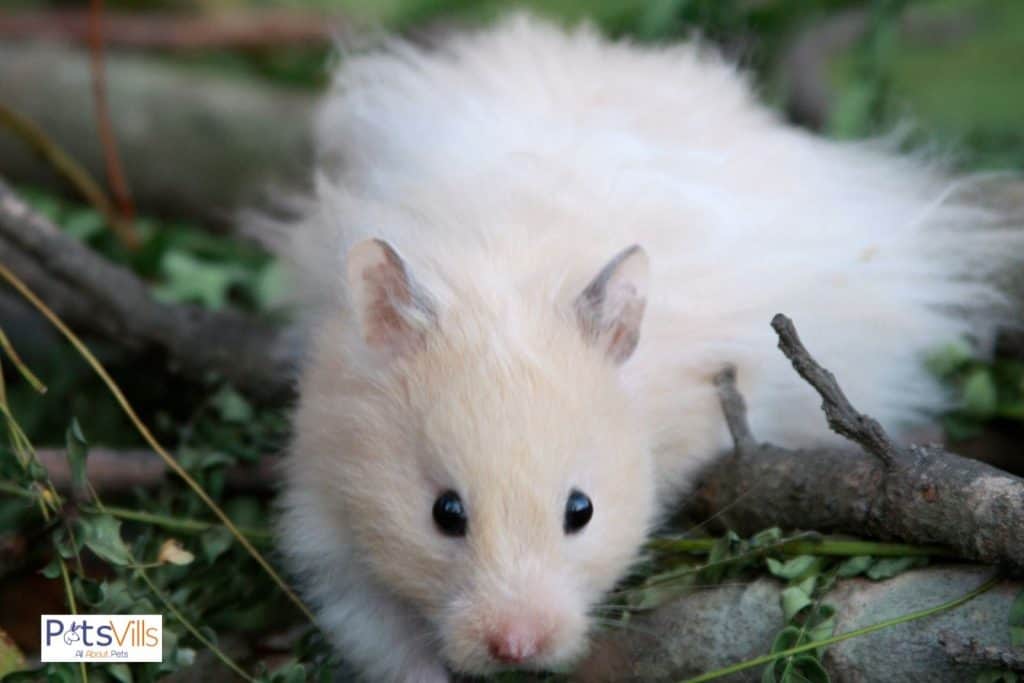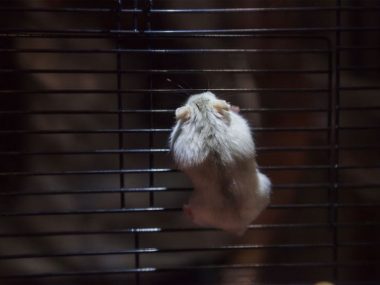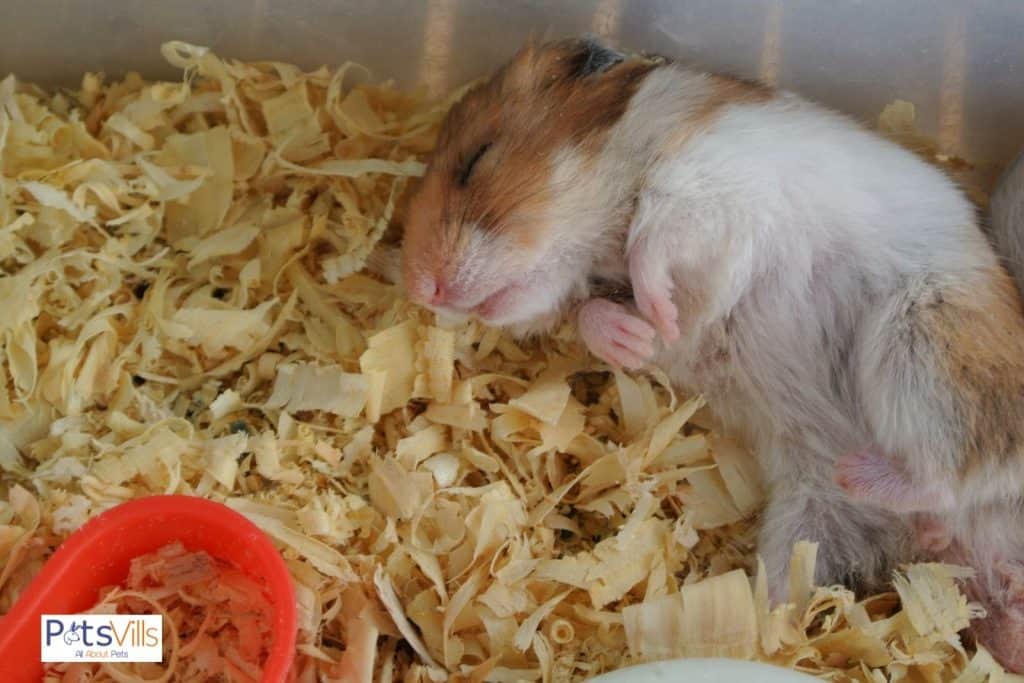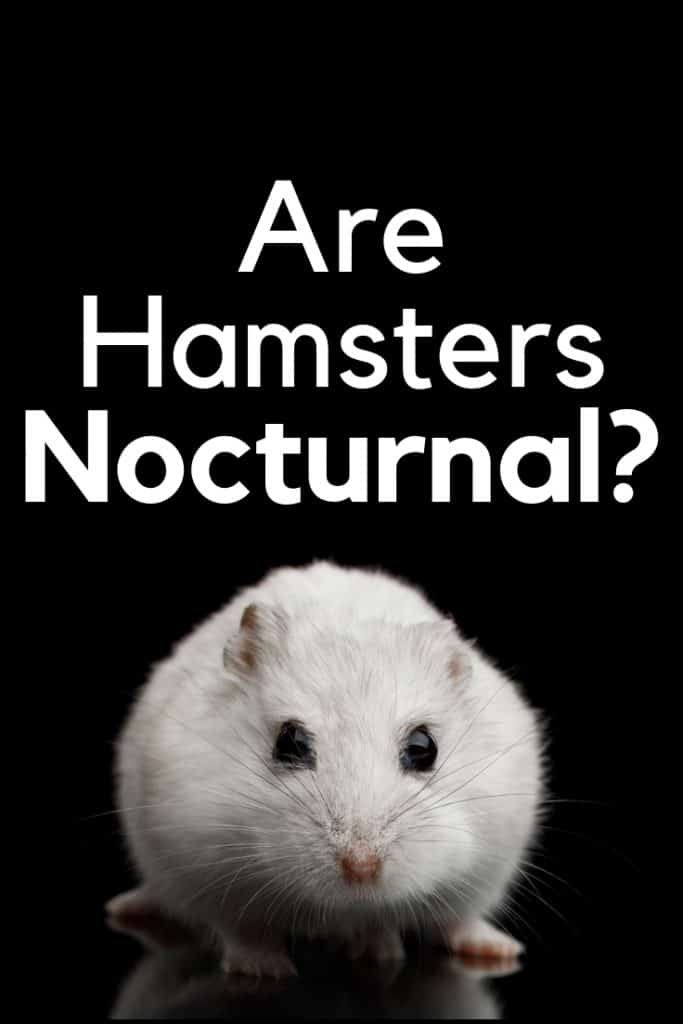Hamsters are adorable and fascinating creatures that are known for their nocturnal habits. If you’ve ever wondered what your little furry friend is up to during those late-night hours, then you’re not alone. In this blog post, we’ll explore the interesting world of hamster nocturnal behaviors and provide some tips for how to care for them during their active hours. So sit back, relax, and let’s dive in!

1. Hamsters are Crepuscular
As mentioned in the previous sections, hamsters are crepuscular creatures, which means they are most active during twilight hours. While some may refer to hamsters as nocturnal, it’s important to note that their natural behavior is more aligned with being active at dawn and dusk. This is due to their programming to be active during low-light hours. Even in the wild, hamsters remain underground during the day to avoid predators and come out to forage for food during sunrise or sunset. So, if you’re an owner of a pet hamster, it’s best to keep in mind that your little furry friend may not be as active during the daytime as other pets. It’s important to provide a comfortable and safe environment for them to rest during their preferred sleeping hours.

2. Crepuscular Behavior is Active during Twilight
As previously mentioned, hamsters are primarily crepuscular animals, which means they are most active during the twilight hours of dawn and dusk. During these times, the atmosphere is illuminated enough for them to move around without exposing themselves to predators. This is why they have developed a natural adaptation to be active during this time. However, it’s important to note that hamsters may also exhibit nocturnal behavior during certain times, especially during the warmer seasons. While they are known to be more active at night than during the day, dwarf hamsters may show more activity during the day than their larger counterparts. Overall, it’s safe to say that hamsters neither fall under the category of being strictly nocturnal or diurnal animals. They sleep for about 12-14 hours per day and prefer to sleep during the day. In the wild, hamsters dig burrows for sleeping and protection. Understanding their crepuscular habits and sleeping patterns is crucial to provide them with optimal care and a safe and comfortable environment.

3. Hamsters can be Nocturnal during the Warm Season
While hamsters are typically classified as crepuscular animals, they can exhibit nocturnal behavior during the warm season. This is because hamsters are more likely to be active at night when the temperature is cooler, and sleep during the day when it is too hot for them to be active. However, it’s important to keep in mind that hamsters are adaptable creatures, and their behavior can vary depending on their environment and individual personality. Regardless of their activity patterns, it’s important for hamsters to have a safe and comfortable sleeping space that allows them to rest and recharge, whether it’s during the day or night.

4. Hamsters’ Sleeping Habits Resemble Nocturnal Behavior
Hamsters are known for their nocturnal behavior, and their sleeping habits closely resemble those of nocturnal animals. In fact, hamsters spend an average of 12-14 hours sleeping during the day, which is why they are crepuscular creatures that are active during the twilight hours. While hamsters can exhibit nocturnal behavior during the warm season, they are generally classified as crepuscular animals that are more active during the day and night transitions. However, all hamsters have nocturnal tendencies and often wake up throughout the night to explore and forage for food. It is important to provide a comfortable and peaceful sleeping environment for hamsters to mimic their natural sleeping patterns. In the wild, hamsters dig burrows to serve as their sleeping and protection areas, and it is recommended to provide similar hiding spots for them in captivity.

5. All Hamsters have Nocturnal Tendencies
As previously mentioned, hamsters are crepuscular animals that are most active during twilight hours. However, this does not mean that they are not nocturnal at all. In fact, all hamsters have nocturnal tendencies, meaning that they may be more active during the night than during the day. This is because they are naturally programmed to sleep during the day and hunt and gather food during the night. Even though different breeds of hamsters may have slightly different activity patterns, such as dwarf hamsters being slightly more active during the day, they all exhibit some degree of nocturnal behavior. So, it is important to provide them with a suitable environment that allows them to follow their natural sleeping and activity cycle, which includes adequate darkness during their resting time.

6. Dwarf Hamsters are Slightly More Active during the Day
Although hamsters are known to be nocturnal creatures, there are exceptions to the rule. Dwarf hamsters, in particular, tend to be slightly more active during the day compared to their larger counterparts. However, this doesn’t mean that dwarf hamsters are fully diurnal. They still exhibit crepuscular behavior and may be most active during twilight hours. It’s important for hamster owners to understand their pets’ specific habits and adjust their schedules accordingly. Providing plenty of stimulation and opportunities for activity during both day and night can help ensure a happy and healthy hamster.

7. Hamsters are Neither Nocturnal nor Diurnal
Despite being commonly referred to as nocturnal pets, hamsters are actually neither nocturnal nor diurnal. As previously mentioned, hamsters are crepuscular animals; they are most active during twilight hours. However, their behavior can also vary depending on their individual personalities. Some hamsters may be more active during the day, while others may be more active at night. Therefore, it is important for hamster owners to observe and understand their pet’s behavior patterns to cater to their needs. It is also worth noting that hamsters sleep for a significant amount of time, requiring 12-14 hours of undisturbed sleep per day. Regardless of their activity patterns, providing a comfortable sleeping environment for hamsters is essential for their overall health and well-being.

8. Hamsters Sleep for 12-14 Hours per Day
Hamsters are interesting creatures with unique habits, one of which includes their sleeping patterns. As previously discussed, hamsters are both crepuscular and nocturnal, making their sleeping habits slightly different. However, it is a fact that hamsters need about 12-14 hours of sleep per day, which they do not get in one continuous sleep cycle. Instead, they have polyphasic sleep-wake patterns, sleeping for shorter periods throughout the day and night. Despite their sleeping habits, hamsters are active and playful creatures when awake, which is why it’s essential to provide them with stimulating toys and activities when they’re up and about. It is also important to respect their sleeping needs, allowing them to rest and play at their own pace. Whether your hamster is sleeping or active, they’re always fascinating to watch and learn about.

9. Hamsters Prefer to Sleep during the Day
It may come as a surprise to many, but hamsters actually prefer to sleep during the day. Due to their crepuscular behavior, they are naturally more active during twilight hours. However, if they feel safe and secure, they will take naps throughout the day as well. It’s important to provide your furry friend with a comfortable and peaceful sleeping environment in their cage, whether it’s a cozy bedding or a hiding spot. Remember, hamsters need their beauty rest too!

10. Hamsters Dig Burrows in the Wild for Sleeping and Protection
As mentioned earlier, hamsters are nocturnal creatures that prefer to sleep during the day. To achieve this, they dig burrows in the wild where they can hide and rest without being disturbed. These burrows have multiple entrances and deep tunnels that provide protection against predators. Hamsters are also excellent diggers, so they can make their burrows cozy and comfortable by creating an intricate network of tunnels. This behavior is not only for sleeping but also serves as a means of protection from danger. Even as pets, hamsters still have a strong instinct to burrow and hide, which is why they need plenty of bedding in their cages. Owners can provide their furry friends with bedding materials such as hay, shredded paper, or wood shavings to encourage their natural burrowing behavior. Overall, hamsters’ burrowing habits are not only cute but also an essential part of their survival in the wild.
- Out-Of-The-Box Wonders: Unveiling The World Of Creative Hamster Cages - April 20, 2024
- Beyond Pets: Hamsters As Cultural Critters In Modern Society - April 20, 2024
- Gut Instincts: Understanding Hamster Digestive Questions And Concerns - April 20, 2024